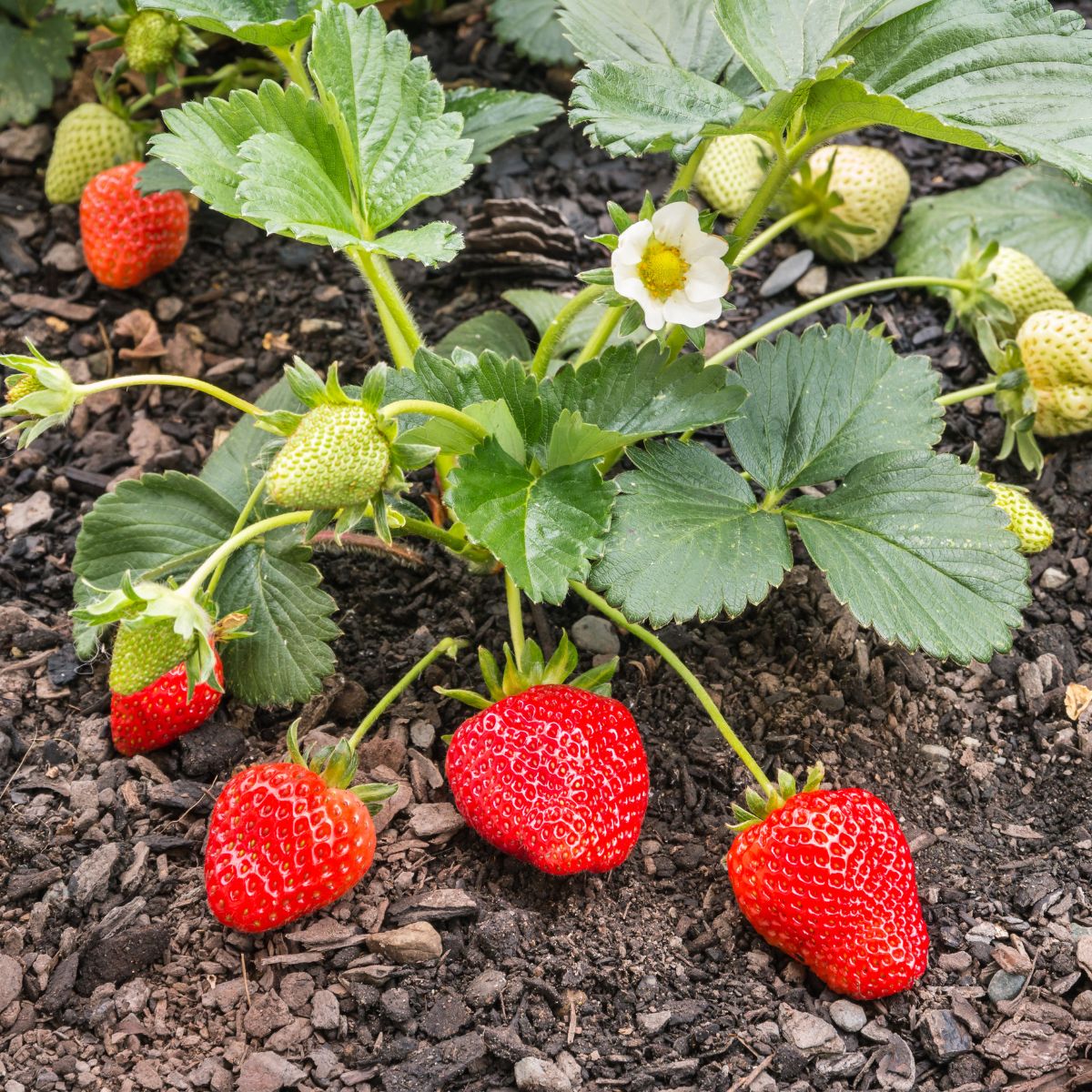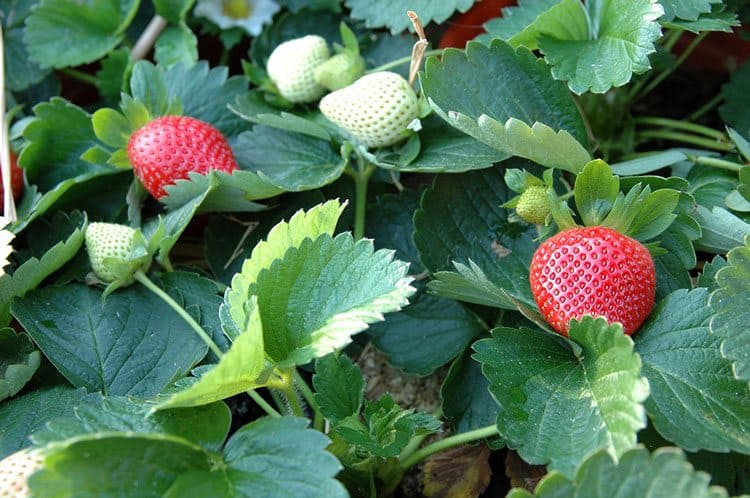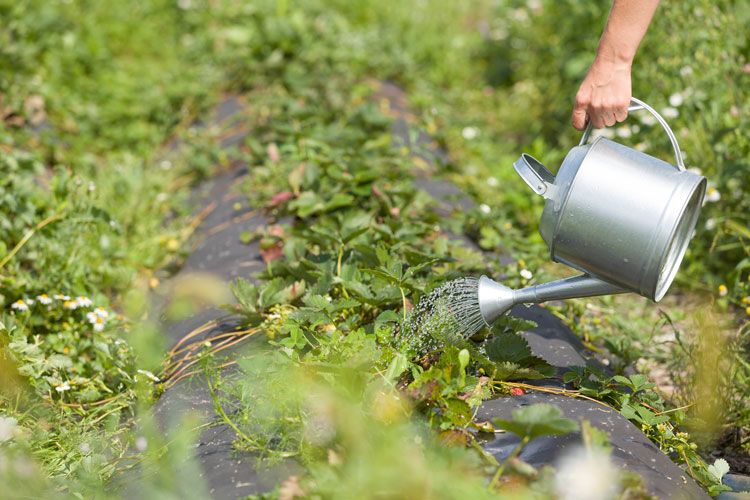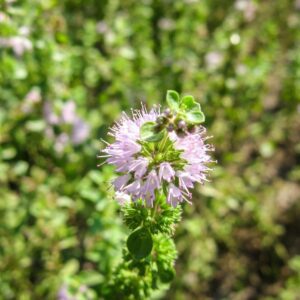Strawberries are a delicious and popular fruit that can be grown in various environments. Watering strawberries is an important aspect of their care, as it helps to ensure healthy growth and bountiful harvests. In this article, we will discuss how often you should water strawberries.

Read Next
- Watering Frequency for Established Plants
- Watering Frequency for Newly Planted Strawberries
- Watering Methods for Strawberries
- Factors Affecting Watering Frequency
- When do Strawberries Need the Most Watering?
- Table 1: Watering Frequency For Strawberries
- Additional Factors to Consider
- Problems of Over-Watering Strawberries
- Strawberry Watering Tips
- Conclusion
- 💬 Feedback
Watering Frequency for Established Plants
Established strawberry plants require regular watering to thrive, particularly during drought or high temperatures. In general, strawberries should be watered deeply once a week during the growing season. However, the frequency and amount of water required may vary depending on the climate, soil type, and plant variety.
To determine if your strawberries need water, check the soil moisture level by sticking your finger into the soil near the plants. If the soil is dry to a depth of 1 inch, it is time to water. Avoid over-watering, as this can lead to water-logged soil and root rot.
Watering Frequency for Newly Planted Strawberries
Newly planted strawberries require more frequent watering than established plants to encourage root development and help them establish themselves in the soil. Strawberries should be watered every other day for the first week after planting. After that, the watering frequency can be reduced to once a week, as described above.



Watering Methods for Strawberries
Several watering methods can be used for strawberries, including drip irrigation, soaker hoses, and sprinklers. Drip irrigation and soaker hoses are recommended for strawberries, as they deliver water directly to the root zone and reduce the likelihood of water-logging or fungal diseases.
Sprinklers can also water strawberries, but it is important to water them early in the day to allow the foliage to dry before nightfall. Wet foliage can lead to fungal diseases and other problems.



Factors Affecting Watering Frequency
Several factors can affect the frequency and amount of water required for strawberries, including:
1. Recent Rain or Not
If it has recently rained or looks like it will rain soon, reduce the number of times you water the strawberries a week.
In drier conditions, i.e., when there hasn’t been any rain for a long time, you will need to increase your watering frequency every week to supply the missing amount.
2. Growing in Full or Half Sun
Exposure to the sun also determines how often to water strawberries. Those growing under full sun in your garden require more water each week than those growing in a shaded or partially covered environment.
Those under the full sun are exposed to more sunlight and lose their water faster through transpiration and plant uptake.
3. The Soil Type
Some soils, such as sandy soils, are known for their poor moisture-holding capacity. The latter directly determines how often to water strawberries growing in such soils. It also means they easily lose their moisture, drying up.
Strawberry plants growing in such soils require more frequent watering than those growing in better soils, such as loam soils, whose moisture-holding capacity allows them to stay moist longer.
When do Strawberries Need the Most Watering?
- In their younger growth phase
- When bearing fruit
- During long periods of limited or no rainfall
Table 1: Watering Frequency For Strawberries
| Established Plants | Newly Planted Plants | |
|---|---|---|
| Frequency of Watering | Once a week during the growing season | Every other day for the first week, then once a week |
| Soil Moisture Level | Dry to 1-inch depth | Keep soil moist |
| Watering Method | Drip irrigation or soaker hose | Drip irrigation or soaker hose |



Additional Factors to Consider
1. Root Type
Strawberry plants have short roots that don’t go too deep into the soil. This means that they easily lose water when it sinks into the soil. It also cements the need for mulching, which keeps water and moisture in the upper layers of the soil.
2. Strawberry Varieties
The different varieties present should also be considered when determining how often to water strawberries. While their water needs may not vary much, the difference between the fruit-bearing periods of the short-day variety, such as the Allstar, and the day-neutral variety, such as the Quinault, necessitates different frequencies in watering for proper fruition and growth.
Problems of Over-Watering Strawberries
Fungal rot
Due to overly frequent watering, the soil around the strawberry plants becomes oversaturated and water-logged. When exposed to too much water for a long time, the plant roots tend to rot quickly, damaging the plant.
Wilting
This is another dangerous effect of watering plants too frequently. It results from waterlogging of the soil and leads to the curling up of the plant leaves until they dry and fall off.
Proliferation of pests
With too much watering comes increased humidity, and with humidity comes the perfect environment for the growth and multiplication of dangerous pests. These attack the strawberry plant’s leaves, roots, and fruits, destroying the plant.
Strawberry Watering Tips
- Start mulching around your strawberry plants to keep more moisture in the soil around them and reduce your watering frequency. You can use natural or plastic mulch; both are good enough to reduce the plant’s water needs.
- Consider adding compost to the soil around your strawberries. It’s not only a source of nutrients for them; it also increases the soil’s water-holding capacity. That way, not all the water sinks quickly to the lower soil layers whenever you water.
- Add some nutrients to the water before you spray it on the plant. Adding nutrients such as nitrogen or tomato feed to the water increases the water’s value and strengthens the plant against growth inhibitors like diseases and pests.
Conclusion
In conclusion, watering strawberries is an important aspect of their care, and the frequency and amount of water required may vary depending on the climate, soil type, and plant variety. Established strawberry plants should be watered deeply once a week, while newly planted strawberries require more frequent watering. Drip irrigation and soaker hoses are recommended for watering strawberries, and it is important to avoid over-watering and wet foliage to prevent water-logging and fungal diseases.





Comments
No Comments